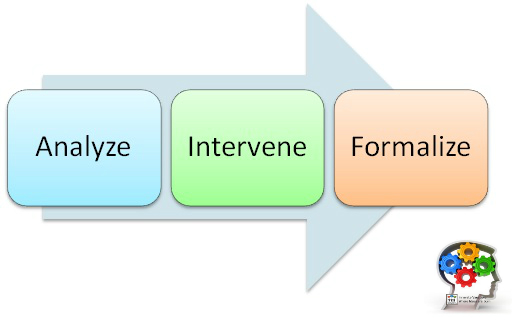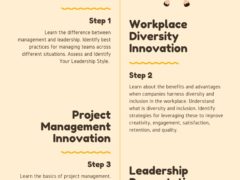Corporate Citizenship has become increasingly important to building effective branding, customer relationships, and ethical business models. The era in which the organization’s product or service is the exclusive focus of the organization has passed. The ways in which the organization operates, conducts itself. and engages its stakeholders is becoming increasingly important. Impact is no longer define exclusively with financial numbers or evaluation of whether or not the customer likes the product or services; it also includes the processes through which the organization conducts its business as well as the impact these have on the global community.
Defining Corporate Citizenship
In order for organizations to build Corporate Citizenship a definition has to be agreed on. What corporate citizenship is remains open to interpretation depending on industry and customer characteristics. This has made efforts to increase corporate citizenship increasingly confusing.
Review of the Corporate Citizenship literature finds key principles shared across the different definitions:
- Sustainability
- Responsibility
- Ethics
- Transparency
The International Institute for International Development (IISD) also defines Corporate Social Responsibility as follows (2013):
“Corporate social responsibility (CSR) promotes a vision of business accountability to a range of stakeholders, besides shareholders and investors. Key areas of concern are environmental protection and the well-being of employees, the community and civil society in general, both now and in the future.”
“The concept of CSR is underpinned by the idea that corporations can no longer act as isolated economic entities operating in detachment from broader society. Traditional views about competitiveness, survival and profitability are being swept away.”
What these mean, and how they are achieved, will vary depending on industry and goals pursued. Corporate citizenship is increasingly central to effective business operations and customer engagement. This guarantees that the values its represents cannot be ignored in corporate planning efforts.
Dimensions of Corporate Citizenship
According the Boston College Center for Corporate Citizenship the following dimensions help build and define corporate citizenship (2006):
- Transparency
- Stakeholder Relationships
- Issues Management
- Structure
- Leadership
- Strategic Intent
- Citizenship Concepts
These help build the following five stages of corporate citizenship:
- Stage 1: Elementary
- Stage 2: Engaged
- Stage 3: Innovative
- Stage 4: Integrated
- Stage 5: Transforming
Guiding Principles of Corporate Citizenship
The United Nation’s Global Compact (2010) includes the following 10 Principles:
Human Rights
- Principle 1: Businesses should support and respect the protection of internationally proclaimed human rights; and
- Principle 2: make sure that they are not complicit in human rights abuses.
Labour
- Principle 3: Businesses should uphold the freedom of association and the effective recognition of the right to collective bargaining;
- Principle 4: the elimination of all forms of forced and compulsory labour;
- Principle 5: the effective abolition of child labour; and
- Principle 6: the elimination of discrimination in respect of employment and occupation.
Environment
- Principle 7: Businesses should support a precautionary approach to environmental challenges;
- Principle 8: undertake initiatives to promote greater environmental responsibility; and
- Principle 9: encourage the development and diffusion of environmentally friendly technologies.
Anti-Corruption
- Principle 10: Businesses should work against corruption in all its forms, including extortion and bribery.
Benefits of Corporate Citizenship
The International Institute for International Development (IISD) has identified the following benefits of pursuing a Corporate Social Responsibility framework (2013):
- “Company benefits:
- Improved financial performance;
- Lower operating costs;
- Enhanced brand image and reputation;
- Increased sales and customer loyalty;
- Greater productivity and quality;
- More ability to attract and keep employees;
- Reduced regulatory oversight;
- Access to capital;
- Workforce diversity;
- Product safety and decreased liability.”
- “Benefits to the community and the public:
- Charitable contributions;
- Employee volunteer programs;
- Corporate involvement in community education, employment and homelessness programs;
- Product safety and quality.”
- “Environmental benefits:
- Greater material recyclability;
- Better product durability and functionality;
- Greater use of renewable resources;
- Integration of environmental management tools into business plans, including life-cycle assessment and costing, environmental management standards, and eco-labelling.”
Pursuing Corporate Citizenship
Pursuing the development of Corporate Citizenship is no easy task. Most models involve the evaluation of the business environment, identifying of opportunities and pursuing them, and formalizing these competencies within existing models, processes, and policies.

A Corporate Citizenship Canvas
The following Corporate Citizenship Canvas can be used by organizations just beginning to explore what they can do to improve their social impact as well as by those seeking to improve existing areas.
- Identifying the business’ Statement of Alignment & Opportunities (analyze): Mission, Vision, & Values Statements. This also includes a GAP analysis to find barriers, opportunities, and gaps in performance.
- Developing the Risk Management Plan: This includes identifying what risks exist, the likelihood of their occurring, the impact if they occur, and prioritizing the organization’s response.
- Planning & Evaluating Performance (Intervene): This includes identifying the organization’s Corporate Citizenship goals, the strategies to help the organization get there, and the tools and metrics to evaluate the organization’s performance.

The Social Citizenship Value Chain
The Social Citizenship Value Chain (Formalize) helps to sustain the organization’s Corporate Citizenship efforts, The value chain represents the business model components essential for being an effective Corporate Citizen. The primary drivers of the value chain include:
- The operation’s Business Model (see Osterwalder, 2010)
- Training & Development (human resource dimensions), and
- The Feedback & Evaluation Systems (administrative dimensions).
Click to view larger image
The Business Model
Andrea Ovens (2015) defines Business Models in the Harvard Business Review as follows:
“[A]n organized way to lay out your assumptions about not only the key resources and key activities of your value chain, but also your value proposition, customer relationships, channels, customer segments, cost structures, and revenue streams — to see if you’ve missed anything important and to compare your model to others.”
“Once you begin to compare one model with another, you’re entering the realms of strategy, with which business models are often confused.”
Organizations that able to answer all the questions above will have a stronger understanding of their business environment, the organization’s readiness to engage Corporate Citizenship initiatives, and build an ethical and sustainable business model that helps lead the way.
How is your organization supporting Corporate Citizenship? Share your comments below.
Travis Barker, MPA GCPM
Innovate Vancouver
http://twitter.com/innovatevan
Innovate Vancouver is a business development & consulting service and technology startup located in Vancouver, BC. Contact Innovate Vancouver to help with your new project. Innovate Vancouver also gives back to the community through business consulting services. Contact us for more details.
References





